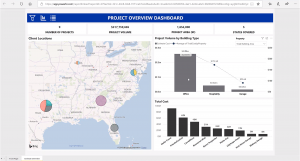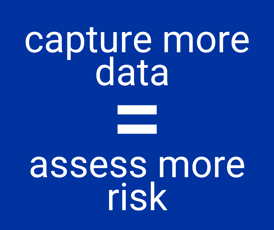3 Ways to Improve Your Construction Data Accuracy
Data accuracy is absolutely critical to the success of a great preconstruction department. But unfortunately, there are dozens of areas where things can easily get “lost in translation”, resulting in mistakes that are often small enough to go unnoticed until it’s too late. The occasional wrong-key smash incident might not seem like a big deal at first glance, but when winning a project means being as close to the actual spend as possible, even the tiniest error can have massive ramifications.
What is Data Accuracy?
 When we talk about data in the tech world, we are referring to the collection of information processed through a computer.
When we talk about data in the tech world, we are referring to the collection of information processed through a computer.Defining data accuracy starts with understanding what these two words mean in relation to each other. Data is simply a collection of facts—numbers, words, and measurements to name a few—that is processed through a computer. Accuracy is the state of something being true. For example, you could have plenty of data available, but if it’s even just a couple of digits off from the actual outcome, it’s worthless.
Today, with competition fiercer than ever, you just can’t afford to lose a project. So how can you avoid the scourge of inaccurate data? We’ve compiled three simple tips.
- Use a centralized platform
- Utilize cost history to make better predictions for future projects
- Create company-wide preconstruction standards to better streamline workflow and share resources across offices
With this in mind, let’s take a closer look at how you can use these tips to your advantage.
1. Use a centralized platform
Why is this important? In most preconstruction departments, there isn’t one single tool used to develop estimates. There are usually at least two or three being used together. For example, Excel might be used to build a report while OST is used for takeoff. The problem with this, though, is that there are too many opportunities for error. You’re having to export and import from one program to another, constantly double-checking the numbers as you go. It’s way too easy for incorrect data to slip through the cracks and enter the final estimate.
DESTINI Estimator is an excellent example of a unified estimating platform. With Estimator, you’re able to build reports, perform 2D and 3D takeoff, and compare current projects/estimates to others. You’re not having to jump quickly from Excel to OST and possibly back again—all of your data, edits, and updates are right there in Estimator. Most importantly, Estimator offers multi-user access, meaning that more than one person can be in the estimate and make changes as well.
2. Utilize historical cost to make better predictions for future projects.
 DESTINI Estimator allows for construction cost history to be captured from estimates
DESTINI Estimator allows for construction cost history to be captured from estimatesOne of DESTINI Estimator’s other key features is the ability to build cost history—a database that anyone can access, at any time. Why is this so important, you might ask? Well, a centralized platform doesn’t solve everything. If the tools you’re using don’t enable you to build a construction cost database that everyone can access, you can’t analyze completed projects to see where you went wrong and adjust accordingly for future ones.
Moreover, being able to perform this kind of in-depth analysis provides a greater sense of accuracy because you start to have multiple eyes on the data. What one person might not be able to catch, another might immediately pick up.
While several of our clients already have cost history built up, the issue arises in where to store it and how to keep track of it. That’s where Estimator comes in. Not only does it provide an accessible database, but it also integrates with PowerBI so that you can view a portfolio of your projects’ data.
3. Create company-wide preconstruction standards to better streamline workflow and share resources across offices
Alright, now let’s say that you’ve got the centralized estimating platform, and bonus, it provides the capability for an organized cost history database. But now you’ve hit yet another hurdle: you’re actually in a company with several different offices across the country, so while the estimators at your office have adopted this new system, the estimators at the other offices are still using Excel/Timberline/WinEst.
In a scenario like that, your estimate data accuracy will probably still suffer. It will be difficult to share resources or collaborate.
The solution? Set company-wide standards for preconstruction so that there’s a more universal estimating workflow, and so that your company can start to be recognized by the style of its estimates. Ensuring that everyone is using the same tools and methods also means that it’s easier to get help on difficult projects, and data accuracy is strengthened because everyone is able to contribute.
While Estimator helps achieve this by providing multiple tools and capabilities under one roof, Beck Technology also takes it a step further and provides training and support for each office a company may have. Additionally, by joining the Estimator family you’ll also have access to the advice and recommendations of other clients who have already been down that road before.
Ultimately, there are many aspects to making sure your estimates are as close to the bull’s eye as possible, and it’s not just about having the latest tools (although that certainly helps)—it’s also about how your company sees the role of preconstruction and the ways they choose to manage it.

-1.png?width=112&height=112&name=image%20(4)-1.png)















